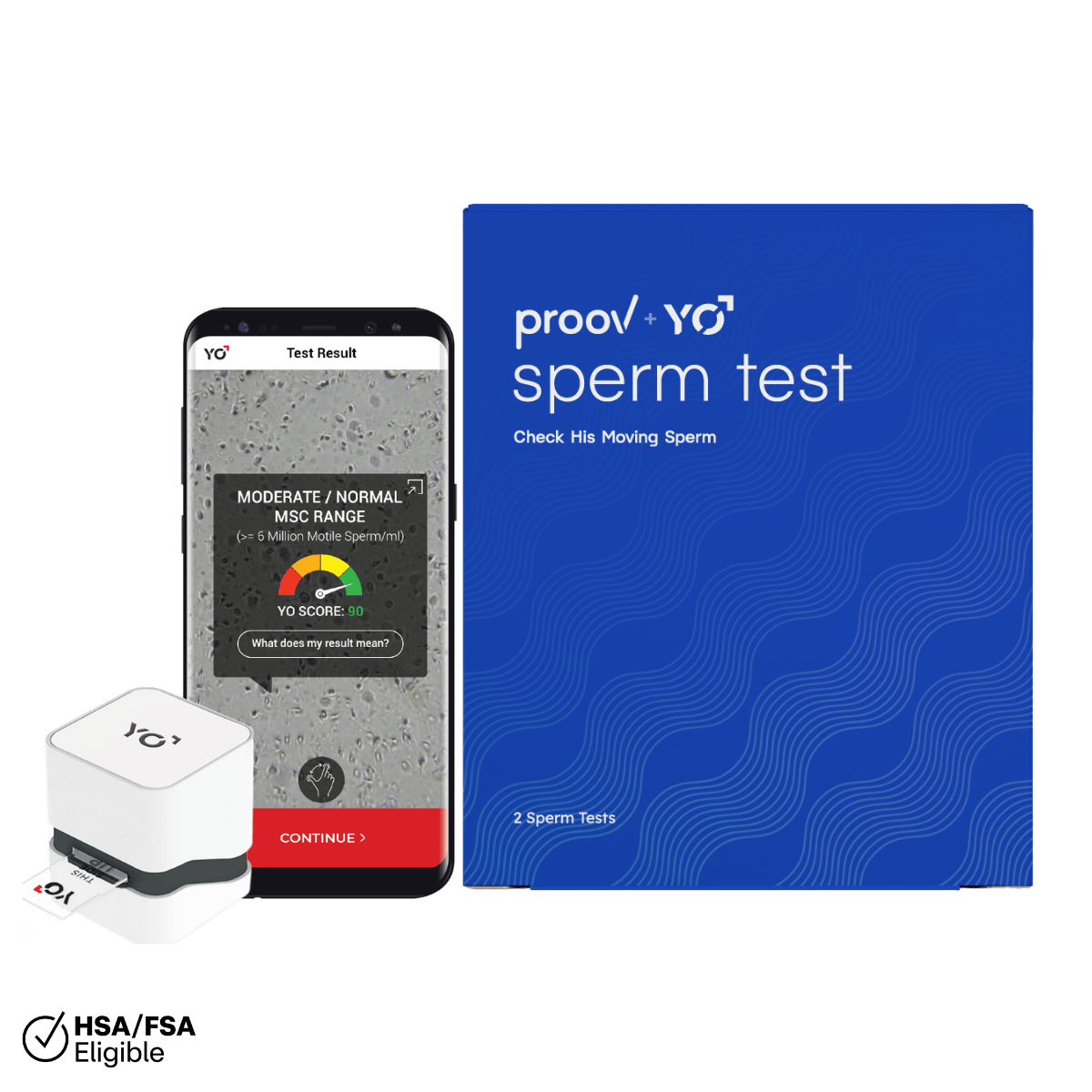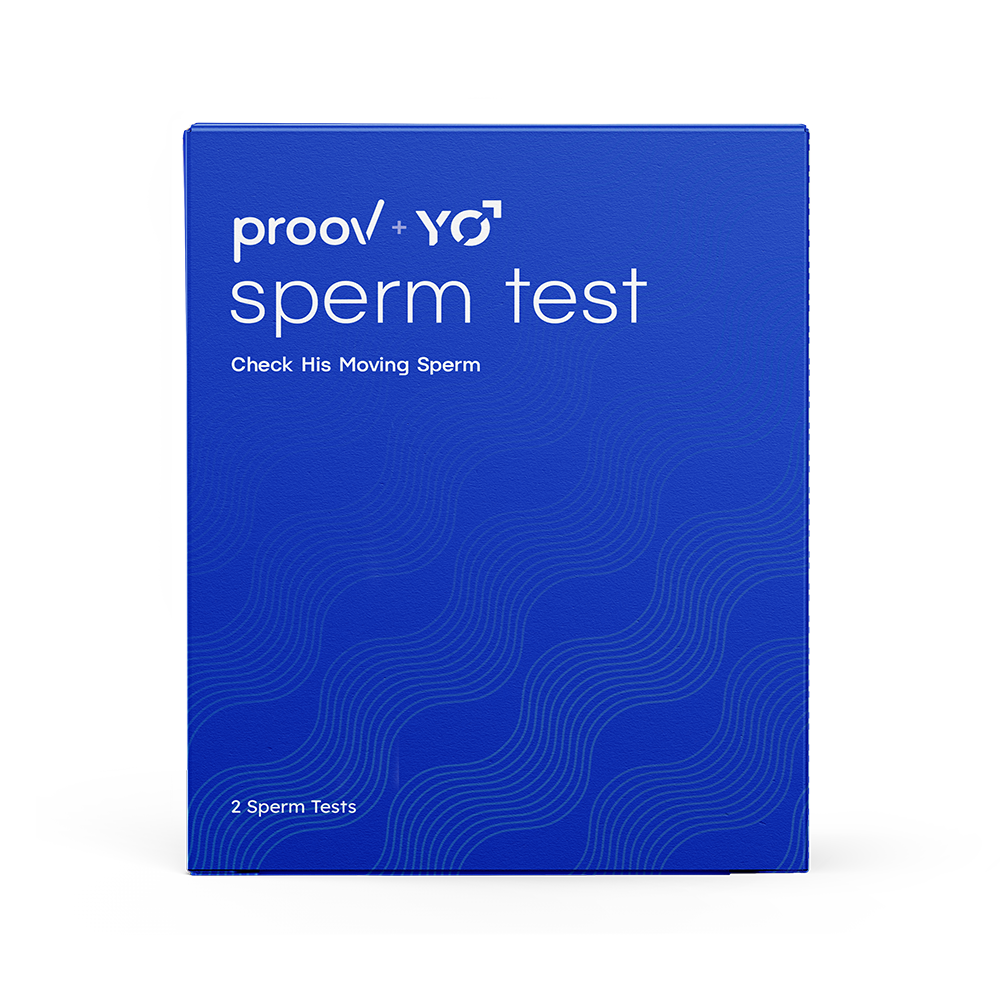When trying to conceive, there are two critical windows during your cycle that you should be aware of: the fertile window and the implantation window. The fertile window is when you’re most likely to conceive, while the implantation window is when a fertilized embryo can implant into the uterus.
Sometimes implantation can be accompanied by some bleeding, similar to your period. Keep reading to learn more about implantation bleeding and how long it lasts.
What is implantation bleeding and when does it occur?
Our cycles are regulated by the two main female sex hormones: estrogen and progesterone. During the follicular phase (the first half of your cycle), estrogen rises and the uterine lining thickens.
Then, after ovulation during the luteal phase, progesterone rises and stabilizes the uterine lining. This makes it “sticky” enough to allow a fertilized embryo to implant. Implantation may happen anytime between days 6 and 12 after ovulation, with it most commonly occurring on days 8-10 past ovulation.

When an embryo implants into the uterine lining, small blood vessels may break. Implantation bleeding is defined as a small amount of light bleeding or spotting occurring around the time the embryo implants in the uterine lining. Most women do not experience it and others may simply overlook it.
Implantation bleeding is thought to occur in about 25% of pregnancies during the luteal phase, generally during the implantation window — about 6 to 12 days after ovulation. Many women mistake it for a real period, especially if they are not planning a pregnancy or are not tracking their cycles.
How long does implantation bleeding last?
How long can implantation bleeding last? Implantation bleeding is short and typically goes away on its own. It usually shouldn’t last for more than 24 to 48 hours. You may be wondering, "Can implantation bleeding last 3 days?" For some women though, implantation bleeding may last as long as a few days, which is why some women can mistake it for a period.
The only real way to find out if light bleeding is your period coming early or a very early sign of pregnancy is to take a home pregnancy test. From the moment an embryo implants into the uterus, it starts producing human chorionic gonadotropin hormone (hCG), which is the hormone produced by the cells surrounding a growing embryo.
Your body needs some time to produce enough hCG in order for it to be detected by a home pregnancy test. Sensitive home pregnancy tests guarantee they can accurately detect a pregnancy as early as 6 days before your expected period.
For a standard 14-day luteal phase, this means you could get a positive pregnancy test as early as day 8 past ovulation. This is possible as long as your embryo implanted on day 6 past ovulation. But keep in mind that most embryos do not implant until days 8-10 past ovulation, so getting a negative pregnancy test that early shouldn’t discourage you! It’s more likely you’d get a positive on days 10-14 after ovulation, if you’ve conceived that cycle.
What does implantation bleeding look like?
Most women will experience just a bit of spotting — pink, beige, brown, or even a few drops of red blood — around the time the embryo implants. Others may experience very light bleeding that may be either pink, brown, or black, indicating old blood.
While some women may need a pantyliner, others won’t. Typically, you’ll notice some color in your vaginal discharge when you wipe.
How do I know it’s implantation bleeding and not my period?

If your periods are light and last only a couple of days, you may not be able to tell the difference between implantation bleeding and your period. But, for most women there are obvious differences between the two.
Period bleeding:
- Starts heavy with red blood, possibly even with clots and gradually goes lighter
- Lasts anywhere between 2 and 7 days
- May be accompanied by premenstrual symptoms like: cramps, mood swings, headaches, bloating, changes in appetite and sex drive
Implantation bleeding:
- Starts light and stays light
- No red blood but rather brownish spotting or very light pink/brown bleeding
- Goes away on its own in 24-48 hours
- May be accompanied by: light uterine cramps, swollen and painful breasts, dizziness
What are the other causes for bleeding in early pregnancy?

Bleeding during pregnancy is not typical and should never be taken lightly. However, light implantation spotting or bleeding is common and shouldn’t cause you to worry. Also, spotting from the cervix after intercourse is not unusual either, due to increased hormones and the sensitivity of the cervix in early pregnancy.
However, if you are pregnant and experience heavy bleeding during the first trimester, you should absolutely visit your doctor. It may signal an underlying medical issue. These are a few causes of heavier bleeding during early pregnancy:
Low progesterone
Low progesterone is one of the main causes of bleeding in early pregnancy. The uterine lining needs a strong progesterone support in order to ensure a healthy luteal phase and be optimal for implantation and pregnancy.
When progesterone levels are suboptimal, the uterine lining is less prepared and less capable to receive the embryo (meaning it’s not “sticky” enough). This might lead to incomplete implantation and potentially to early miscarriage if left untreated.
Subchorionic hematomas
Subchorionic hematomas (or subchorionic hemorrhage) form because there is an abnormal accumulation of blood between the wall of the uterus and the placenta. The causes aren’t fully understood and the treatment, when recommended, relies on rest and progesterone supplementation.
Subchorionic hematomas may be discovered during a first trimester ultrasound or they may cause bleeding of different intensities, from light spotting to heavy flow with clots.
Ectopic pregnancies
Ectopic pregnancies are one of the most dangerous causes of bleeding in early pregnancy. An ectopic pregnancy occurs when the embryo implants outside the uterine cavity, with the most frequent location being the tubes, and more rarely the abdominal cavity, the cervix or the ovary.
An ectopic pregnancy is never viable and the tissue, while growing, poses serious, even life-threatening risks to the mother. One of the first signs of an ectopic pregnancy is light bleeding, accompanied by pelvic pain that can become excruciating, especially if a tube ruptures. An ectopic pregnancy is a medical emergency and you should always take any signs of an ectopic to your doctor.
While implantation bleeding is completely normal and pretty common, bleeding in pregnancy is always something you should share with your doctor. Monitoring the changes in your body when trying to conceive can help you get and stay pregnant!












